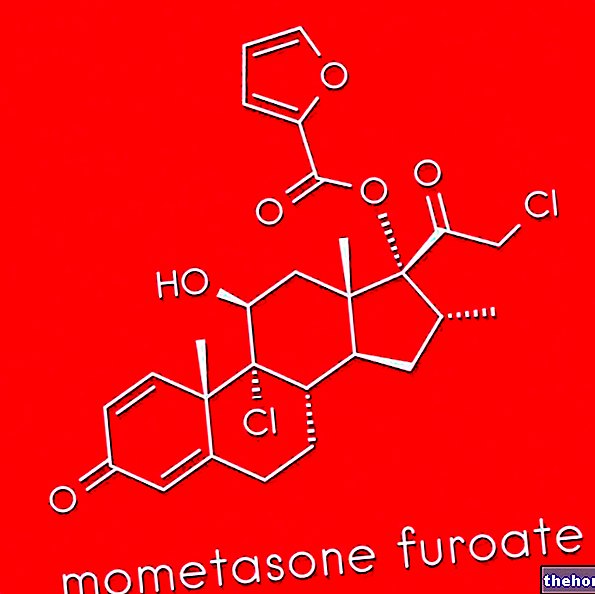Definition
Still's disease is a chronic inflammatory disease, which closely resembles rheumatoid arthritis. For this reason, this disease is considered a particular form of arthritis on an autoimmune basis.
To be more precise, the full name of this disease is "adult-onset Still's disease." There is also a sort of juvenile form of this disease, but it is more correctly defined as "juvenile rheumatoid arthritis."
Causes
The triggering causes of Still's disease have not yet been precisely identified, although some argue that the onset of this disease may be favored by bacterial or viral infections.
Symptoms
The symptoms that Still's disease can cause in patients are: high fever, salmon-colored skin rash, inflammation of the throat, pain in the muscles and pain, swelling and joint stiffness.
If not properly treated, Still's disease can cause serious complications, such as irreversible joint damage, pleural effusion, pericarditis and / or myocarditis.
Still's Disease Information - Medicines to Treat Still's Disease is not intended to replace the direct relationship between health care professional and patient. Always consult your doctor and / or specialist before taking Still's Disease - Medicines to Treat Still's Disease.
Medicines
Unfortunately, there is no real cure for Still's disease, but treatments can be undertaken to slow its progression and reduce the symptoms it causes.
Drug therapy will be instituted by the doctor on an individual basis for each patient, depending on the severity with which Still's disease occurs. In any case, since it is a chronic inflammatory disease, usually, pharmacological treatment must be continued for the entire duration of the patient's life.
The drugs mainly used in the symptomatic treatment of Still's disease are anti-inflammatories, both non-steroidal and steroidal, and immunosuppressants.

The following are the classes of drugs most used in therapy against Still's disease and some examples of pharmacological specialties; it is up to the doctor to choose the active ingredient and dosage most suitable for the patient, based on the severity of the disease, the state of health of the patient and his response to treatment.
NSAIDs
NSAIDs can be used in the symptomatic treatment of Still's disease due to their anti-inflammatory, analgesic and antipyretic properties. Therefore, they can be very useful in counteracting the classic symptoms induced by Still's disease such as fever, pain and inflammation.
These drugs can be administered through different routes, including oral, topical and parenteral ones.
Among the many active ingredients that can be used, we remember:
- Acetylsalicylic Acid (Aspirin ®, Alkaeffer ®): Acetylsalicylic acid is available for oral and parenteral administration.
When administered orally, the dose of drug usually used in adults ranges from 325 mg to 1,000 mg, to be taken 2-3 times a day.
If acetylsalicylic acid is administered parenterally, however, the dose usually used in adults is 500-1,000 mg, to be administered intravenously or intramuscularly, every 6, 8, or 12 hours, depending on the need and opinion. of the doctor.
In any case, the exact quantity of drug to be taken and the route of administration of the same must be established by the doctor. - Ibuprofen (Brufen ®, Moment ®, Nurofen ®, Arfen ®, Actigrip fever and pain ®, Vicks fever and pain ®): when ibuprofen is administered orally, the dose administered should not exceed 1,200-1,800 mg per day The exact amount of active ingredient to be taken will be established by the doctor, according to the severity of the pain and inflammation.
- Ketoprofen (Artrosilene ®, Orudis ®, Oki ®, Fastum gel ®, Flexen "Retard" ®, Ketodol ®): the dose of ketoprofen usually administered orally is 150-200 mg per day, to be taken in two or three doses fractionated and on a full stomach.
When, on the other hand, ketoprofen is used in the form of pharmaceutical formulations for skin use, it is recommended to apply the product to the affected area 1-3 times a day, or according to the doctor's prescription.
It should also be remembered that to avoid the onset of photosensitivity reactions, the part treated with ketoprofen for cutaneous use must not be exposed to sunlight and UV rays, both during the treatment and for a period of at least two weeks from term of the same. - Diclofenac (Dicloreum ®, Deflamat ®, Voltaren Emulgel ®, Flector ®): when diclofenac is administered orally, the dose usually used can vary from 75 mg to 150 mg per day, to be taken in divided doses. When using diclofenac-based gel, it is recommended to apply the product directly on the area affected by the inflammation 3-4 times a day.
If you use the medicated patch based on diclofenac, however, it is recommended to apply two patches a day (one in the morning and one in the evening) on the affected area. The duration of treatment should not exceed ten days. - Naproxen (Momendol ®, Synflex ®, Xenar ®): if naproxen is administered orally, the dose usually used is 500-1,000 mg of drug per day, to be taken in divided doses every 12 hours.
Corticosteroids
Corticosteroids are powerful anti-inflammatory drugs that work by interfering with the activity of the immune system. Therefore they can be very useful in treating the inflammation, and therefore the pain, which characterizes Still's disease.
Among the various active ingredients that can be used, we remember:
- Methylprednisolone (Urbason ®, Medrol ®, Solu-Medrol ®). the initial dose of methylprednisolone to be used must be determined by the doctor, according to the patient's condition. Thereafter, the amount of drug administered can be modified according to the patient's response to the therapy itself. In any case, indicatively, the dose of methylprednisolone used orally can vary from 4 mg up to 48 mg per day.
- Prednisone (Deltacortene ®): The dose of prednisone usually administered orally is 10-15 mg per day. Again, the exact dosage of the medicine will have to be determined by the physician on an individual basis.
Immunosuppressants
Immunosuppressive drugs can be used in the treatment of Still's disease thanks to their ability to suppress the immune system, therefore the autoimmune response generated by it and the consequent inflammation that characterizes the disease.
Among the various active ingredients that can be used, we remember:
- Ciclosporin (Ciqorin ®, Sandimmun ®): cyclosporine is available in different pharmaceutical formulations suitable for different routes of administration, including oral and parenteral. The dose of active ingredient to be used must be established by the physician on an individual basis for each patient.
- Azathioprine (Azafor ®, Azathioprine Aspen ®, Azathioprine Hexal ®): Azathioprine is available for oral administration in the form of tablets. Generally, the initial dose used is 1-3 mg / kg of body weight per day. At each Thus, the exact quantity of azathioprine to be administered varies according to the condition of each patient and according to the patient's response to therapy, therefore, it must be established by the physician on an individual basis.
- Methotrexate (Reumaflex ®): Methotrexate can only be administered by a doctor or specialized personnel and is available for intramuscular, subcutaneous and intravenous administration. The usual dose is 50 mg per week, taken over a period of 4-8 weeks.
- Sulfasalazine (Salazopyrin ®): The usual starting dose of sulfasalazine is 500 mg per day. Thereafter, the amount of drug used will be gradually increased until the optimal maintenance dosage for each patient is reached.




























